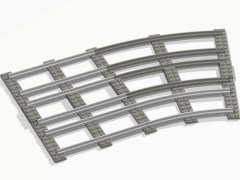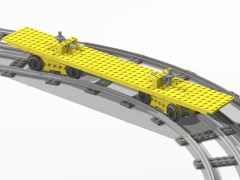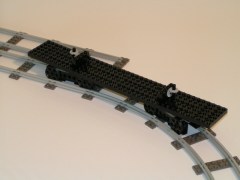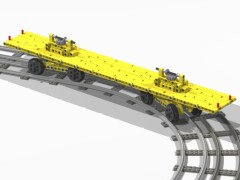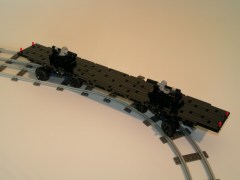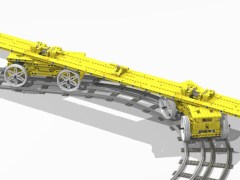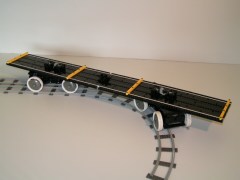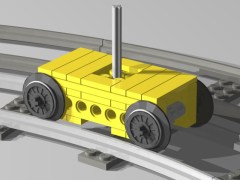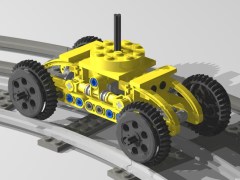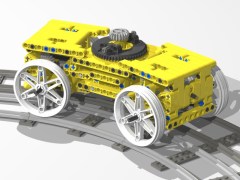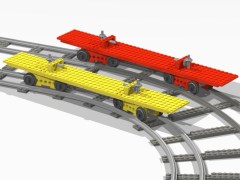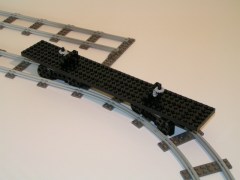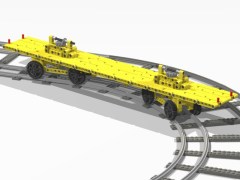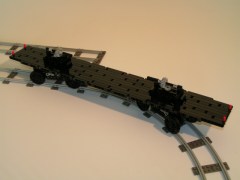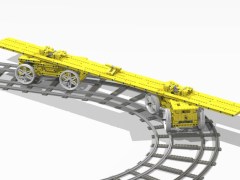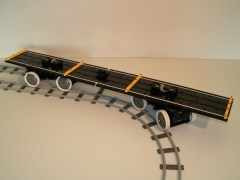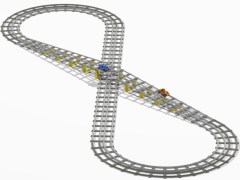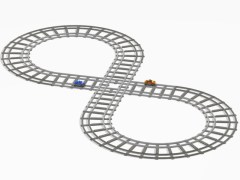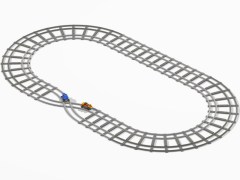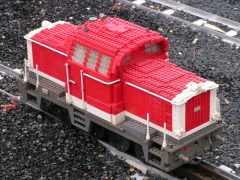 To all those who ever paid a visit to one of the LegoLand parks: where you as amazed as I was when you first laid eyes on one of those large scaled trains?
To all those who ever paid a visit to one of the LegoLand parks: where you as amazed as I was when you first laid eyes on one of those large scaled trains?
Those are really magnificent models; every Lego train fanatic would love to have one of these driving through his backyard. Unfortunately these trains are only from Lego on the outside: the mechanism that drives these trains isn't, nor are the rails. Although Christian Krützfeldt assured me that those tracks were moulded at TLC too, I don't consider them real Lego-parts.
Wouldn't it be wonderful if TLC started a new theme with larger scaled trains? Basic sets wouldn't have to be motorized, because with the new Power Function system they already have everything that is required to get them running.
However, there is one problem: the track geometry. I have seen a few train fanatics who have already tried to build a larger scaled train: Christian Krützfeldt showed his model at the 75th anniversary of Lego in Billund, but I also found some BrickShelf users, e.g. BrickBaron, Reinard Van Loo, and Vincent Veneman with beautiful large scale train models. These creators all suffer the same problem: their trains can't run on standard Lego railtracks. Best case scenario: if 4.5V straight rails are used with a different trackwidth, the trains can run straightforward, but never through curves.
Since metallic parts have dissappeared (from 9V to RC-rails), it would become easier for TLC to create different track geometries: they've already admitted that they would consider doing it. But what type of track should that be? Within the AFOL-community there have been lots of discussions regarding this matter. I'd like to do my share, right here.
Märklin has three different train-scales:
- Z gauge: with a scale of 1:220
- HO: with a scale of 1:87
- MAXI / 1 gauge: with a scale of 1:32
What if Lego came up with a new system of railtracks (we already know that the L-gauge will not disappear!) that would allow three types of trains all running on the same tracks? Here's my solution:
